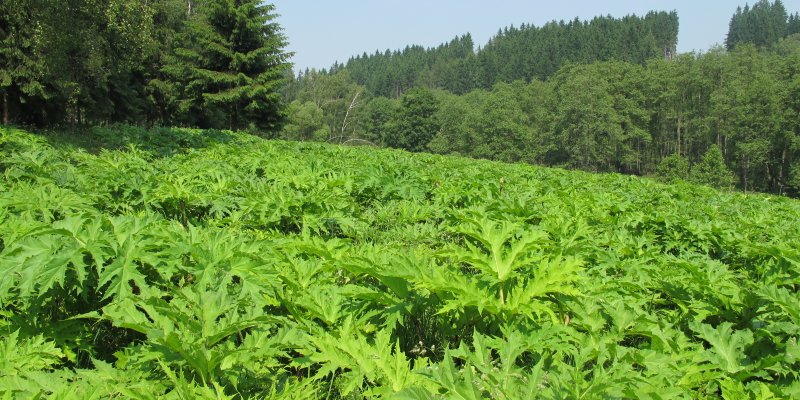
Coexistence of competitors mediated by plant soil feedbacks
Soil organisms are increasingly considered to influence plant community dynamics and contribute to outcomes of plant-plant interactions. Plant-soil feedbacks (PSFs) indicate the ability of a species to modify soil abiotic and biotic conditions in ways that alter the performance of plants subsequently growing in the same soil. Plant performance is typically reduced in soil with a microbial community cultivated by conspecific individuals compared to soil trained by hetererospecifics. PSFs work in a frequency-dependent manner: the greater the frequency of the species cultivating the soil, the lower the performance of subsequently grown plants of the same species. PSFs are thus an important stabilizing mechanism controlling local dominance.
Increasingly negative effects of PSFs as a control of a plant invader´ impact
Some exotic plant invaders can substantially reduce the richness of invaded communities. However, it remains less clear how this negative impact will change over time. By taking advantage of a natural chronosequence of the timing of invasion of giant hogweed (Heracleum mantegazzianum) in grasslands in the western part of the Czech Republic, we have demonstrated the time-dependent effects of this invader on the richness of local species. At sites invaded for less than 30 years, native diversity was much lower compared to uninvaded sites, but longer residence of the invader was coupled with decline in its dominance but also with rebounding number of native plants.
A complementary common garden experiment suggested that the dynamics observed in the field was due to negative plant–soil feedbacks. Hogweed survival and biomass, and its competitive ability were lower when growing in soil inocula collected from earlier-invaded grasslands. This pattern disappeared in sterilized soil, however, suggesting biotic soil feedbacks were responsible for the observed pattern. Although biotic PSFs did not prevent large impacts in the early stages of the invasion (probably because competitive interactions occurred much faster than accumulation of soil pathogens of hogweed), they allowed coexistence of the invader with native species at least in more advanced phases of invasion (Dostál et al. 2013).
Dostál, P., Müllerová, J., Pyšek, P., Pergl, J. & Klinerová T. (2013) The impact of an invasive plant changes over time. Ecology Letters 16: 1277–1284.

